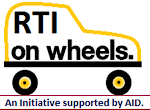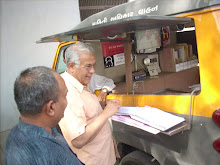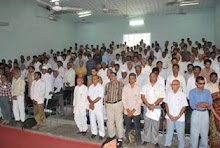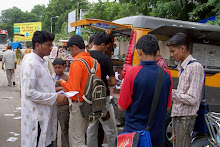Daily Pioneer: Bhubaneswar:
Tuesday, 11 August 2020.
A senior
IAS officer, Bishnupada Sethi is currently the Commissioner-cum-Secretary,
Revenue and Disaster Management, Odisha. He was called for to join the Indian
Administrative Service of Odisha Cadre after his MTech in Industrial
Engineering from a reputed national institute at Mumbai. His engineering skills
and ingenuity has had been providing necessary impetus in handling the
departments with perfect adroitness during his administrative career. He began
his journey as Sub-Collector, Project Director, DRDA, Collector in the KBK
region and then became Secretaries to different departments. Sethi has lent
Midas touch of gold in his areas of assignments by bringing about meaningful
changes focusing on effectiveness, sound financial discipline and leadership.
He was chosen for receiving the International Star Award for Leadership in
Quality (ISLQ) in Paris in 2015. The Institute of Economic Studies has
conferred upon him the Udyog Ratan Award. He has bagged the President’s Silver
for successfully conducting the 2011 Census in Odisha. Under his leadership as
Director, OSDMA, Odisha had climbed to soaring heights in handling multiple
disasters. Sethi remains at the vanguard of the Revenue Department to inflict
crushing blows to land grabbers in urban pockets and is committed to weed out
corruption by implementing the 5T programme. He hits the bull’s eye with
effortless ease. In an interview to The Pioneer, Sethi spoke to Sugyan
Choudhury on many issues concerning the Revenue Department.
How
far have the people been genuinely benefited by the implementation of 5T in the
Revenue Department?
As per
direction of Hon’ble Chief Minister to trust the goodness of people rather than
integrity of our processes, Resident and Income Certificates are issued basing
on self-declaration of applicants and documents without RI enquiry. This has
earned the goodwill of people and eased the process of governance in the
matter. Integration of e-District Portal with DigiLocker for sharing the
digital copy of certificates has been facilitated. Similarly, e-Registration
application has been integrated with DigiLocker so that registrant public can
pull their documents registered after 4th January, 2010 and store in their
DigiLocker for perpetuity. Over 6.25 lakh e-Certificates have been issued
online since its launching on 28th December, 2019. The process assures citizens
with more choices at hand and ensures saving of time, money and dispenses
physical journey to revenue offices. Citizens can pay land revenue online
anytime anywhere through e-Pauti portal (odishalandrevenue.nic.in) and Mobile
App (PAUTI). All types of fees have been abolished for issuance of Resident,
Income, Income & Asset, Legal Heir, Guardianship, ST, SC, SEBC and OBC
certificates. Consent-Based Aadhaar Authentication during property registration
has been introduced. For this, the e-Registration application has been
integrated with the Aadhaar database of UIDAI. All Tehsil and Registration
offices have been brought under the ‘Mo Sarkar’ from 26th February, 2020. After
registration, suo-motu mutation is initiated and corrected RoRs are sent
through speed post. Digitally-signed copy of RoR is issued through e-District
Portal. Digitally-signed certified copies of Encumbrance Certificate (EC) and
Certified Copies (CC) of registered documents are issued online though IGR Portal
(https://www.igrodisha.gov.in/). The fixed minimum limit of Rs 1,000 for
e-Stamp Certificate has been abolished. Now, e-Stamp Certificate can be issued
for any amount.
How
far has the implementation of 5Ts simplified the cumbersome rules for SC &
ST communities?
Application
fee and other fees have been abolished for issuance of caste certificates in
favour of SC & ST community people. Applications can be filed online
anytime anywhere (https://edistrict.odisha.gov.in) to obtain caste
certificates.
Huge
encroachments, including encroachment by fraud documents in the village of
Sipasaruvali at Puri and other urban pockets of the State, are reportedly still
going unchecked. How are they being curbed?
Odisha
Prevention of Land Encroachment Act 1972 and Odisha Prevention of Land
Encroachment Rules 1985 have detailed provisions and procedure to prevent
encroachment of Government lands and take coercive steps against the
encroachers. Tehsildars have been authorised to take steps against encroachment
and safeguard the Government lands. In this regard, the department has recently
issued guidelines to all RDCs/ Collectors requesting them to take urgent steps
for eviction of encroachments. Funds are provided to the Collectors for
protection of Government lands since 2009-10.
How
far has Digital India Land Records Modernisation Programme been implemented in
our State?
Odisha
is pioneer in implementing Digital India Land Record Modernisation Programme,
which has been well-documented from the fact that Odisha was adjudged second in
position in National Land Records Services Index 2020 (N-LRSI) survey conducted
by the National Council of Applied Economic Research. Under DILRMP, Odisha has
computerised all Registration Offices (SRO). Registered documents are delivered
to citizens on the same day. Encumbrance Certificates and Certified Copies of
registered documents are issued online. Digitisation of land records of the
tenants showing the ownership of land has been done, which is available in the
Bhulekh website (http:// bhulekh.ori.nic.in). Cadastral maps have been
digitised and hosted in the Bhunaksha website (http://bhunakshaodisha.nic.in/).
All revenue offices have been provided with high-speed internet connectivity
for updating of land records through e-Mutation software, namely Land Records
Management System (LRMS). LRMS is the single source, where every land record
gets updated. Modern Record Rooms are operational in 279 tehsils out of 317
tehsils.
Rampant
corruptions at the lower echelons in tehsils are reported often. Are there any
plans against this?
Introduction
of various e-Governance initiatives such as e-Registration, e-Stamping,
e-Mutation, Bhulekh, Bhunaksha, Revenue Court Case Monitoring System (RCCMS),
Document Management System (DMS), online payment of land revenue (e-Pauti) for
delivery of public services and to minimise physical interface between people
and Government offices have been initiated along with measures such as:
Introduction of the 5Ts in delivery of public services; encouraging cashless in
registration offices; over 99% of stamp duty and approximately 99% of
registration fee are collected through cashless mode in registration offices;
bringing tehsil and registration offices under the ambit of Mo Sarkar;
punishing corrupt officials and appreciating sincere efforts of honest and efficient
officers; prompt action on media reports and petitions alleging corruption at
various levels which are referred to senior-level field officers for enquiry;
taking appropriate action on the matter and submission of action-taken report
to the department.
What
are the measures undertaken for prompt disposal of RTI applications?
A
separate RTI Cell is functioning in the department. A Nodal PIO, a First
Appellate Authority and branch-wise PIOs have been designated for supply of
prompt reply to applicants under the RTI Act.














































































